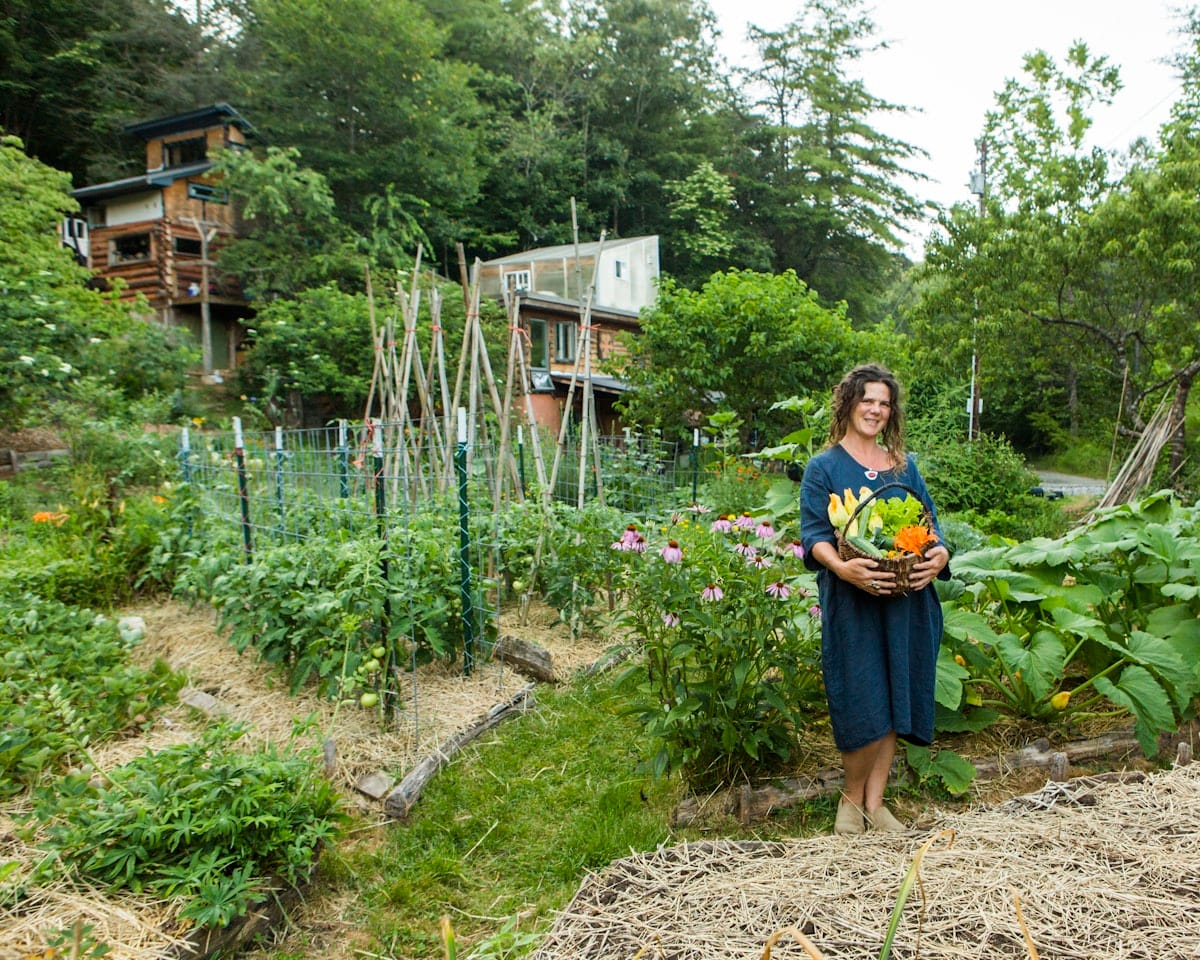I was recently asked why I started teaching carpentry classes for women and it turned into a fun little interview! We recorded the conversation and I’m excited to share it with you ☺️
As women, it’s important to tell each other our success stories (along with the inevitable challenges that inspire us to do something different in the world). Forming networks, teaching each other, and rooting for other women is how we get stronger and more confident together.
I hope you enjoy the interview….!
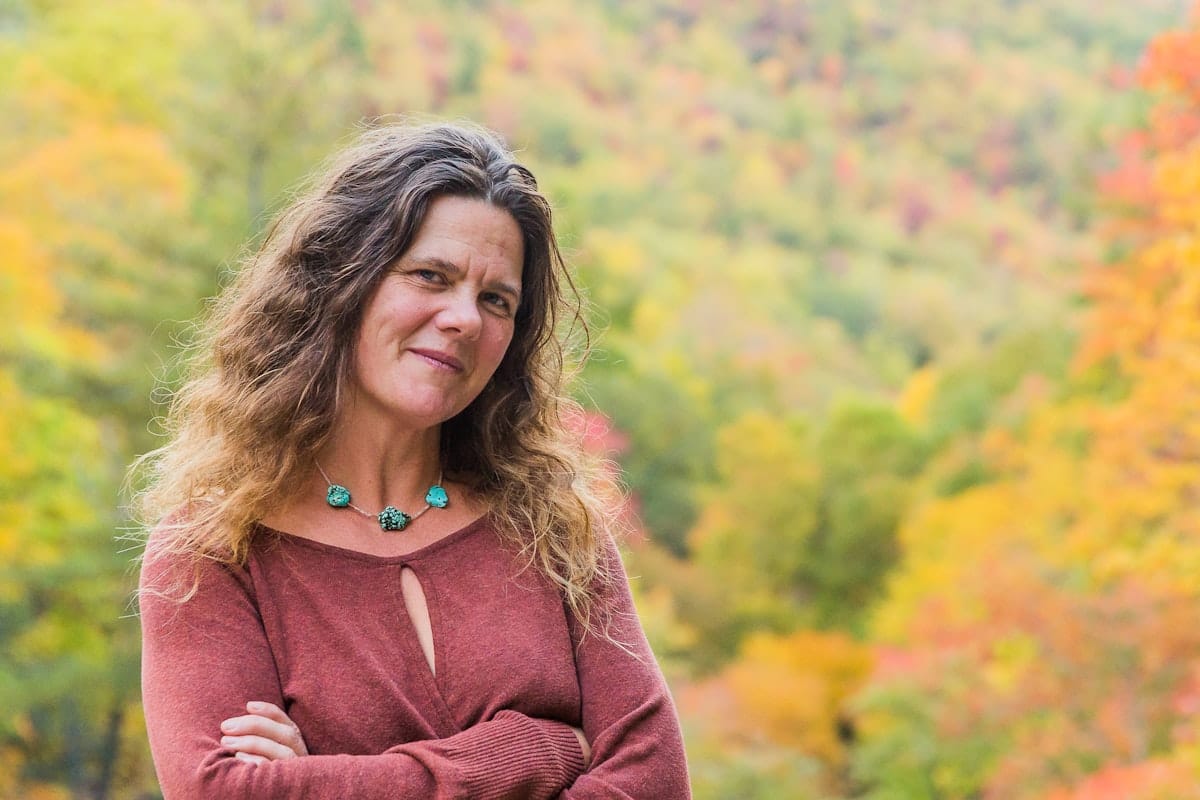

Natalie, you’re an accomplished carpenter and architect. When did you first become inspired to learn about building and woodworking?
When I was a kid my dad had a shop and he would build things for our family—like our garage and the barn for my horse. Plus he was handy and into building things in general, which I thought was really cool! When I was 10, we built a birdhouse together and this set the stage for many other crafts: bark baskets, brooms, buckskin, and jewelry.
What was your first big carpentry project?
In my early 20s I was living in Spain, which is rich in vernacular architecture. I got really excited about natural building and decided I wanted to build my own house. The first home I constructed was a primitive Catawba-style bark hut at a community land project in North Carolina. Beforehand, I attended a bark lodge building workshop with my mentor, Steve Watts, and this really set me up for success. Still, my bark hut was much more of a traditional dwelling than a modern carpentry project.
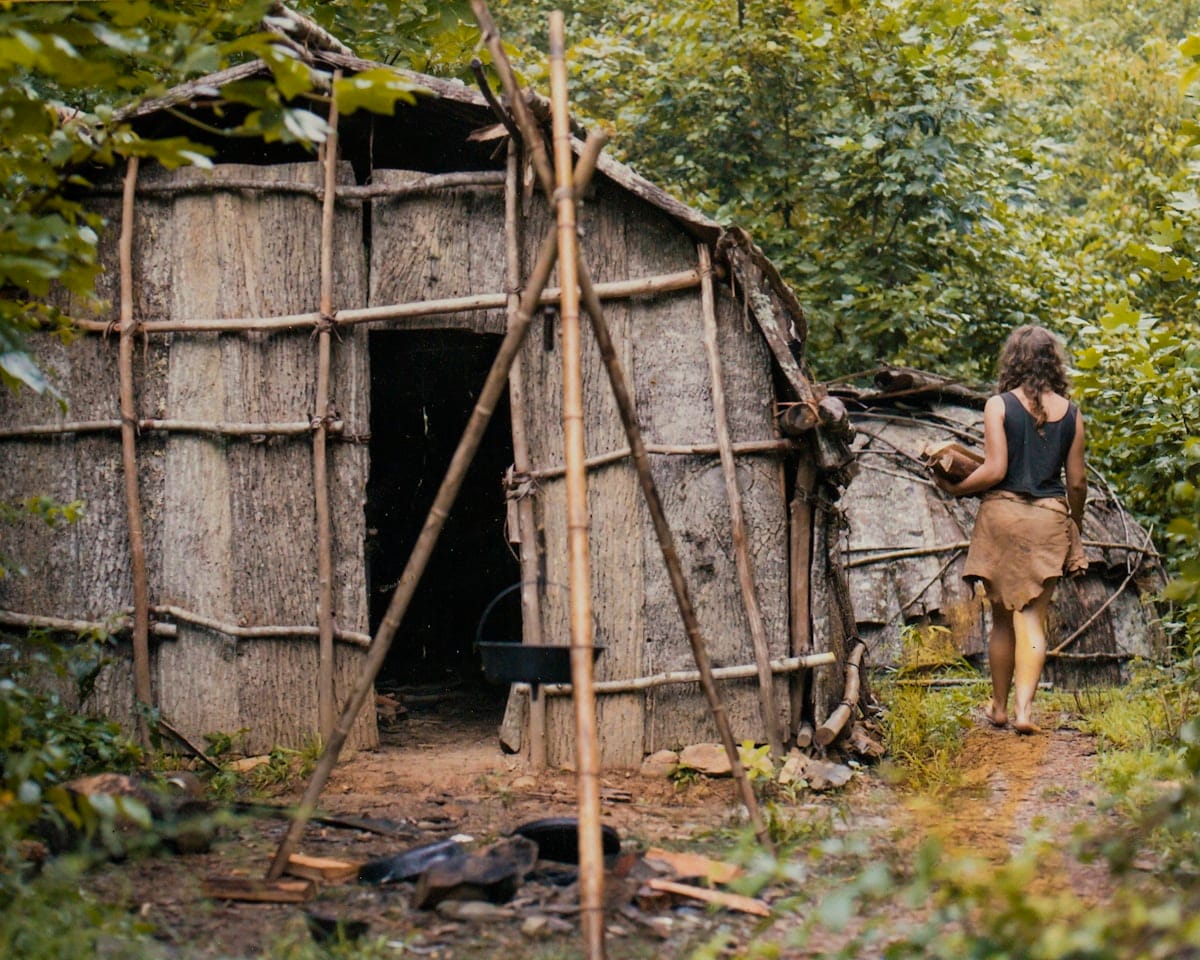

Around the same time, I was also taking a bunch of natural building classes. I loved them, but they didn’t include essential skills like framing out structures or laying foundations. It was just putting mud on walls. So I started learning how to build in earnest on my own and alongside my boyfriend at the time. He was a carpenter and he hired me to be his assistant.
Soon after, I built my first official cabin—an 8’x12’ tiny house—largely by myself! I was a little miffed that my boyfriend didn’t help out much, but it was actually a gift because I realized I was really good at figuring it all out. I had so much fun!
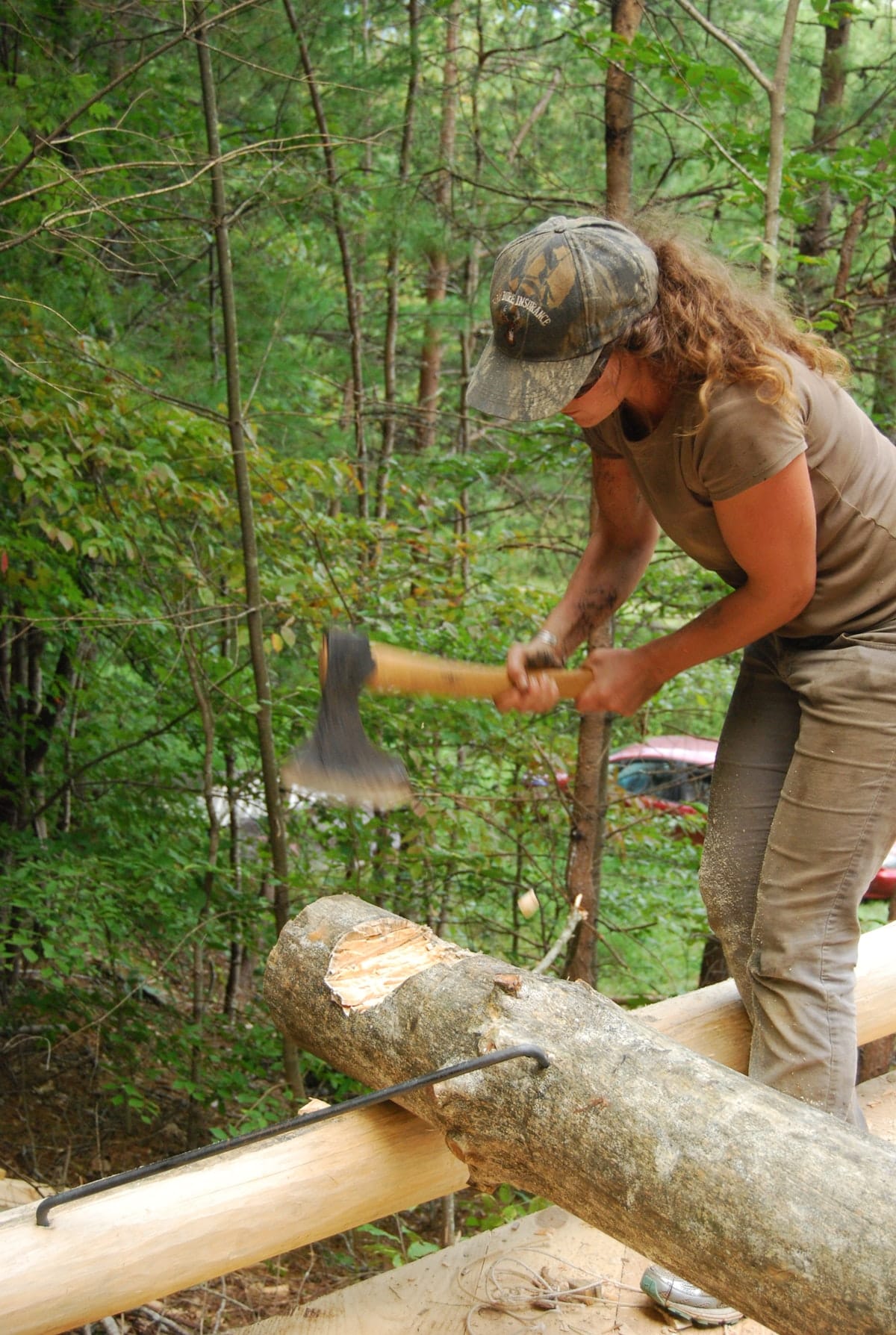

You now offer basic and advanced carpentry classes for women throughout the year. What inspired you to offer women’s carpentry workshops?
Being a confident carpenter has been incredibly powerful for me in a world that’s full of man-splaining. I’ve gained so much confidence because I can build a bookshelf…or a house! It’s really changed how I orient myself to the world—I feel incredibly capable. Teaching women to become carpenters is also changing how they interact with the built environment and with builders—they can speak intelligently about carpentry, take on their own projects, and call men out when they’re man-splaining. We’ve now taught thousands of women basic and advanced carpentry skills through Wild Abundance! Sharing these skills is a lifelong dream.
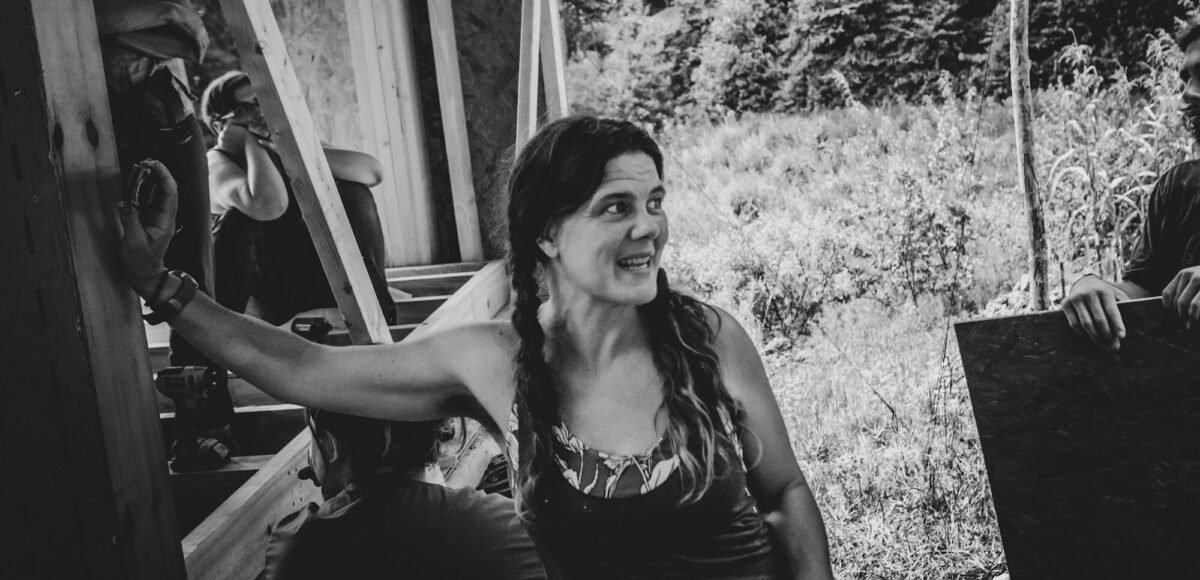

Yet in general, women often take a backseat when it comes to projects that involve building and tools. This became clear to me 14 years ago when I bought the land where I live now and needed to build a bunch of infrastructure. I decided to host a series of carpentry classes to help get the work underway and support the evolution of Wild Abundance.
Later that year, I co-taught the very first Women’s Basic Carpentry Class with my friend, Barron Brown. Eight women joined us and we worked on a pagoda-style building that still lives on the Wild Abundance campus. It was overly ambitious, but it taught me a lot about how to structure workshops! Over the last 10 years, we’ve been refining our Women’s Basic Carpentry Class to be THE best women’s carpentry class we think it’s possible to teach. We’ve incorporated feedback from our students every step of the way, and we continue to gather this feedback at the closing circles we hold at the end of every session.
Even though I had become a skilled carpenter at that point, I didn’t feel ready to teach, so I hired a few instructors. We started building a big outdoor kitchen and covered teaching space. During the class, I observed that the men were more engaged, while the women tended to sit back and watch. This dynamic bothered me because I knew it was happening in the greater culture. I decided we needed to have classes just for women so they could learn in an environment where they felt confident and empowered.
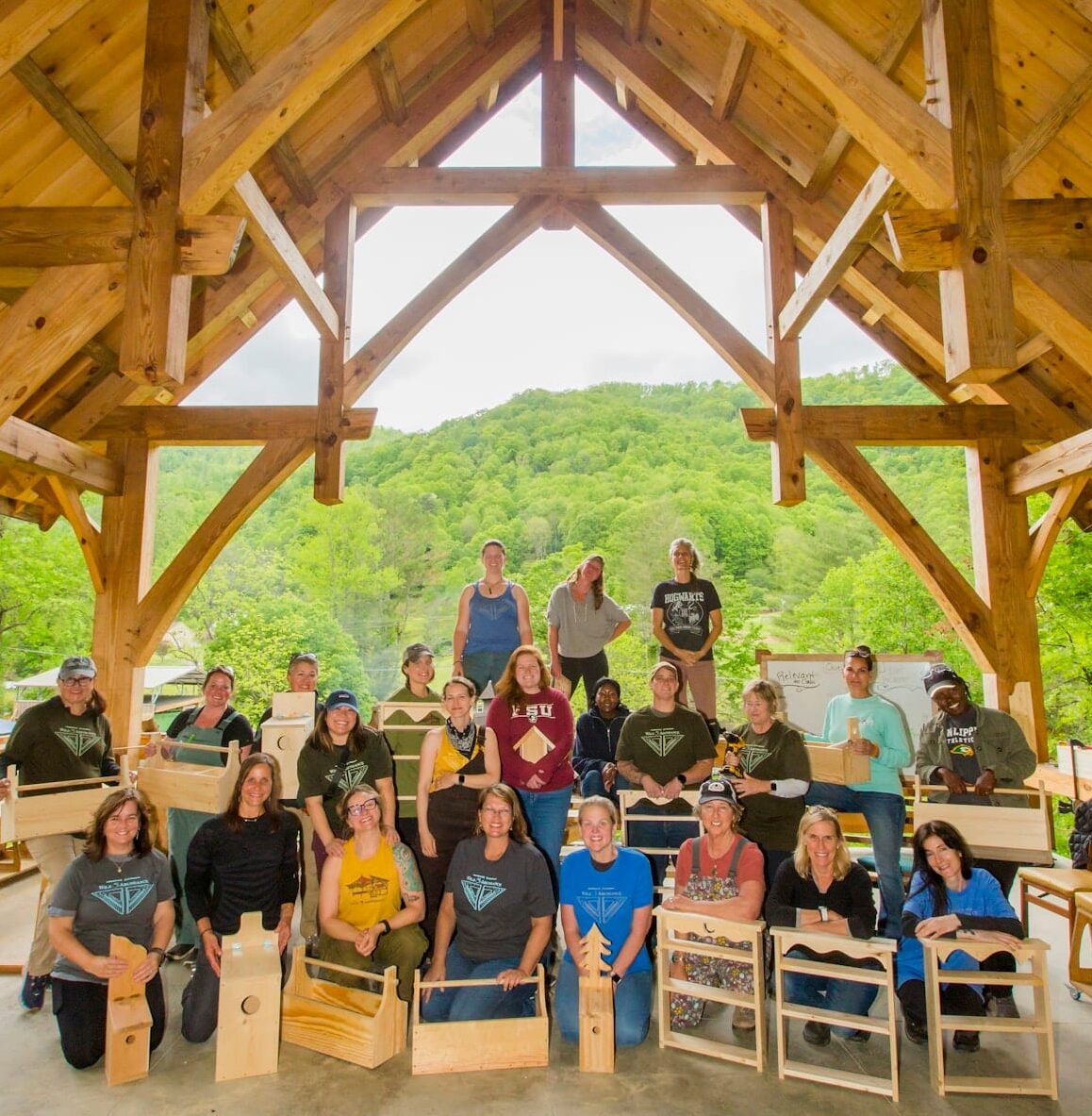

I’m so proud of the classes that have taken shape: we teach women about tools and how to use them. All of our students learn project design—we work together on a group project during each class session (like building a deck) and each student also designs a small personal project and builds it out themselves to take home. The point is to develop mastery and safety when it comes to tool use.
Our Women’s Advanced Carpentry Class teaches skills for next level projects, such as designing and constructing simple buildings. For even bigger goals and skills, many students go on to take our Tiny House Building Workshops.
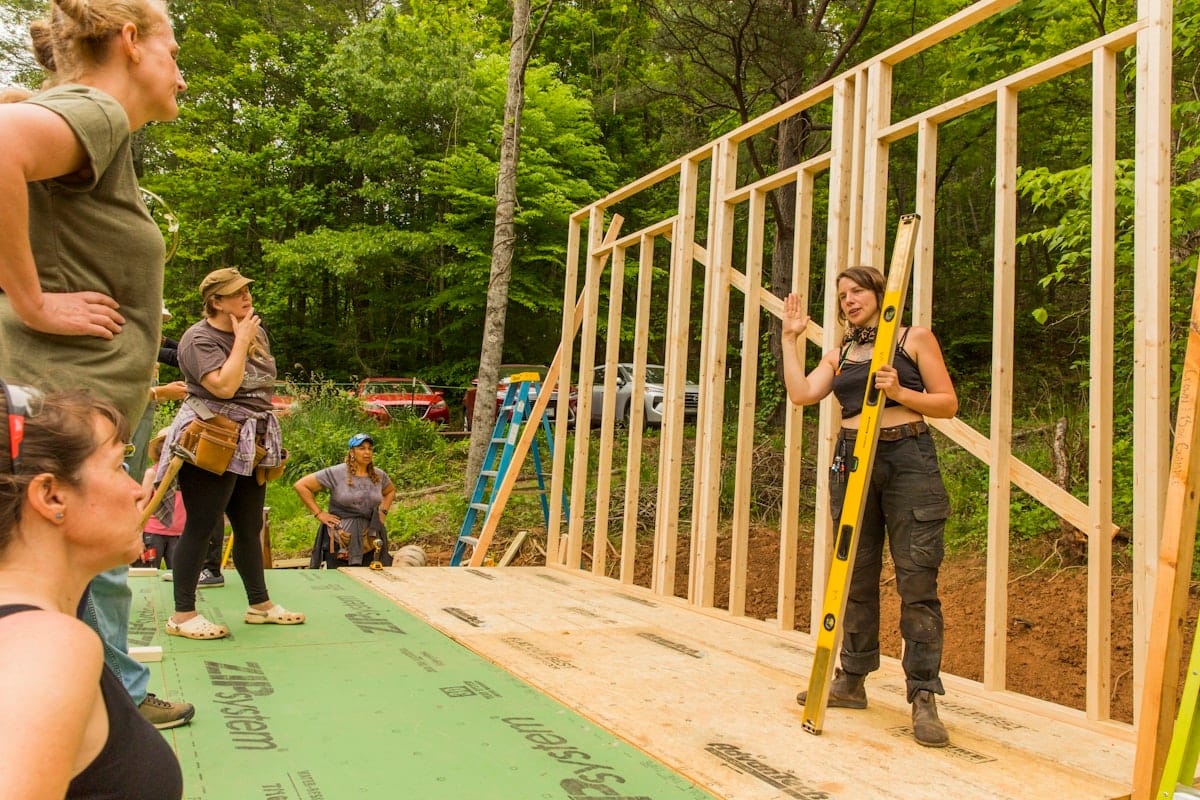

What advice do you have for aspiring women carpenters?
Start with small projects and work your way up to bigger builds. Also begin with a basic set of tools—you really don’t need much! I highly recommend receiving mentorship from patient, caring carpenters that are excited to elevate women and break down the masculine gatekeeping that can happen around skills like carpentry. A good mentor will also know how to teach tool use for women’s bodies. For example, most women have less upper body strength than men do, so we need appropriately-paced and specialized environments to learn how to be most capable at carpentry.
How is your vision for building, architecture, and carpentry continuing to expand?
As I’ve gotten older (I’m firmly rooted in middle age now!) I don’t feel as motivated to swing a hammer all day. I’m more excited about designing buildings and exploring my passion for ancient and traditional architecture. I’m also training teachers and developing more classes for women, which is my forever love!
